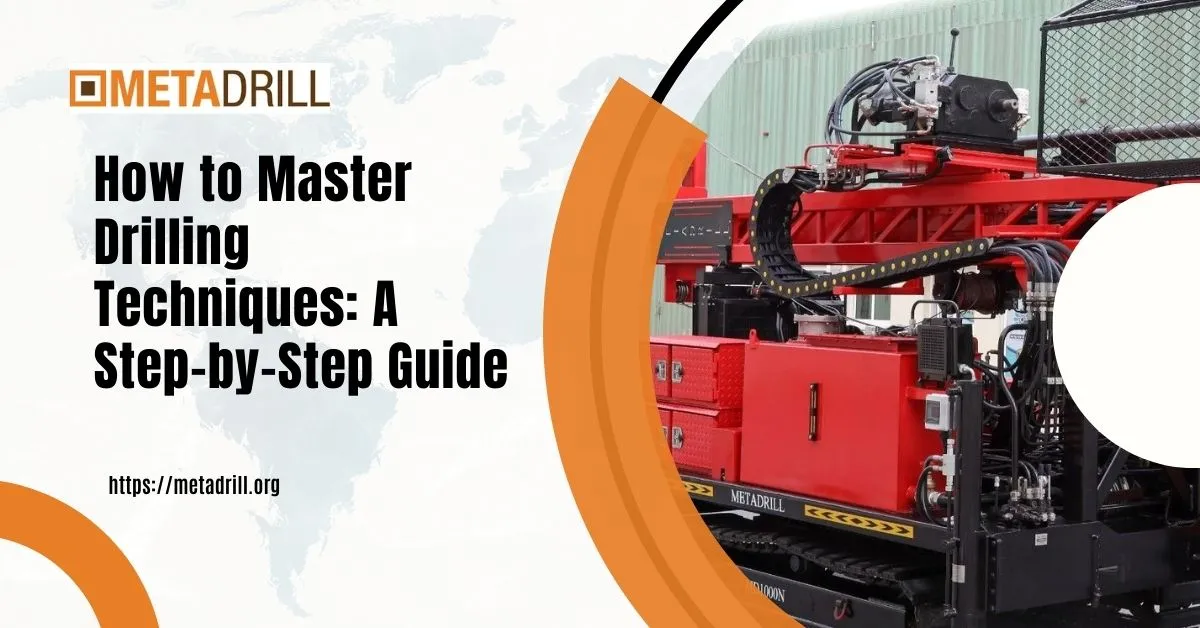
Drilling is crucial in various industries, including construction and woodworking, requiring care, drilling technique, and knowledge. Whether you are a DIY enthusiast or an expert, the ability to drill well can significantly improve the quality and results of your projects. Now, let us move on to a step-by-step guide to help you become a drilling pro.
A Comprehensive Guide to Drilling Techniques
The act of drilling is one of the major skills that apply in different sectors, such as the construction or even woodworking industries. By mastering these techniques, you can attain an almost perfect and efficient outcome when drilling.- Choosing the Right Drill
- Choosing the Right Drill Bit
- Preparing the Work Surface
- Marking the Drilling Location
- Clamping the Material (if necessary)
- Using a Drill Press (optional)
- Starting the Drill
- Controlling The Twist
- Drilling Through Materials
- Finishing Touches
Choosing the Right Drill
There are two main types: cordless drills, where portability and convenience become primary in most tasks, and superior power corded drills for heavy-duty applications. Hammer drills are designed specifically for use on concrete or masonry, providing the "punch" required to bore through these challenging materials. Impact drills are the best for screw driving: they impart a confident hammering motion to fasteners that drives them in firmly. Choose a drill bit based on your project's needs.
Choosing the Right Drill Bit
The drill bit is critical to the quality and effectiveness of your drilling. Pick up some suitable material for the material you will be drilling. For example, use an HSS for most metals, carbide-tipped for masonry, and a wood bit for drilling into wood. Whichever you will use, please, do make sure that its diameter is appropriate for the hole you will want to see or fill with screws, bolts, or other fasteners. Consider specialized bits such as twist, spade, or Forstner for specific jobs.
Preparing the Work Surface
The work surface should be sturdy and stable to prevent accidents or unintended movement of drilled material. Use clamps or work holding devices to keep the material securely in place, especially with larger or heavier material.
Marking the Drilling Location
Carefully mark your drill location with a pencil or marker. This way, you avoid mistakes and ensure accurately placed holes. For increased accuracy in hole placement, you can use a combination square or marking gauge for some projects that require proper alignment.
Clamping the Material (if necessary)
Clamp bigger, heavier material firmly against the work surface during drilling. This helps to avoid movement while the drill is being processed to ensure control and thus prevent the drill from slipping or wandering, hence producing a clean, accurate hole.
Using a Drill Press (optional)
Even a drill press can be utilized for more accuracy and precision. A drill press constrains the drill bit to be kept in one position and control, with no error or drilling diagonally to the surface. It is convenient when working on projects that require many holes to be drilled straight or at an angle in particular directions.
Starting the Drill
Hold the drill by gripping it with two hands; ensure the grip is secure. Align the drill bit at the marked location. Take it slow when drilling so you do not let it slip or wander around. Gradually increase the speed as you permit it to cut through the material for effective performance. Use light pressure so the bit is in contact with the material. You should not use too much pressure, or you will bind the bit and eventually break it off.
Controlling The Twist
Do not exert too much force, as it makes the bit bind or even break out. Control the angle of the drill so that the bit does not walk while creating a clean hole. Control the temperature to check for overheating, which could destroy the motor orbit. For metals such as oil or coolant, use cutting fluid to reduce friction on the bit and avoid heating up while penetrating.
Drilling Through Materials
Wood drilling requires a slow drill without causing splitting. To make drilling easier, use a metal cutting fluid in case of overheating. On the masonry side, a hammer drill is recommended, which should be used gradually from slow speed to full speed once the bit starts digging into it. A masonry bit best suited for the type is also recommended to avoid moving out the whole lot while remaining in the hole.
Finishing Touches
After you drill your hole, there are some finishing steps to ensure it stays clean and smoothed out. Use a brush or compressed air to remove all the debris from the hole. Degrease the hole if required for the best possible adhesion of your screw or bolt. Check the hole for any imperfections or burrs and use a file or deburring tool to smooth them out. If essential, counterbore or chamfer the hole to accept specific types of fasteners or to prevent the material from splitting.
Final Thoughts
These steps and techniques can make you good at drilling and successful in achieving professional-level outcomes. As the saying goes, "Practice Makes Perfect." The more you drill, the more confident and better you will be.
MetaDrill is the leading drilling company in the USA, particularly for those who have inquiries or need professional drilling. With its experience, besides its tools, MetaDrill can complete projects of any complexity, as short as just home repair and as long as industrial uses.
Question to the public: